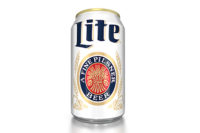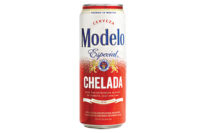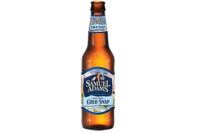In recent years, the beverage industry has seen craft beers and — even more recently — craft spirits increase in popularity. Consumers are drawn to these products because of their authenticity, quality, localness and experimental nature, says Danny Brager, senior vice president of New York-based Nielsen’s beverage alcohol practice. With wineries infiltrating every state in the country, many of these craft attributes are impacting the wine category as well, he notes.
Blended wines, in particular, are being purchased for their “craft-like” characteristics, according to Nielsen. In one of the company’s recent surveys, 55 percent of respondents said that they buy blended wines because they offer a great opportunity to experiment with wines, Brager says. These wines appeal to consumers’ desire to explore and be adventurous in their wine purchases, he adds.
The majority of wineries seem to be picking up on this desire. Most established wine brands now offer a blended variety, Brager says.
“It’s gotten so popular [that] almost everybody that’s got a major brand has launched a blended variety of that wine to accompany all their other varieties,” he says.
In fact, within the last two years, 40 percent of new wine releases tracked by Nielsen have been wine blends, he says. The segment increased 16.8 percent in dollar sales and 12.6 percent in volume sales for the 52 weeks ending Jan. 4 in U.S. retail outlets, according to Nielsen data. Further demonstrating its growth, wine blends have surpassed Moscato wines as the fastest-growing varietal within the category in terms of dollar sales, he notes.
“[Moscato] wasn’t even in the Top 10 a few years ago, and now it’s the No. 3- selling white wine variety,” Brager says. In particular, Moscato wines showed explosive growth in the three years leading up to this year, but that growth is slowing down, and blends are taking the spotlight, he notes. Dollar sales of Moscato wines increased 12.2 percent for the 52 weeks ending Jan. 4 in off-premise channels, according to Nielsen.
Sparkling varietals including Prosecco from Italy and Cava from Spain also are getting more attention, experts note. For instance, dollar share for Prosecco grew 28 percent in 2013 compared with the prior year, Nielsen’s Brager says. Rosé, Moscato and Cava sparkling wines also grew dollar share approximately 4 percent last year, which is faster than Champagne’s growth of almost 2 percent, Nielsen reports.
These sparkling wine options outside of Champagne are increasing in popularity because of their more casual, affordable positioning, notes Edward Hsyeh, U.S. analyst for Euromonitor International, Chicago.
“Champagne will always hold its place within sparkling wines, but these other, more affordable and approachable sparkling wines are gaining attention,” he says. “Their price points are easier on people’s wallets and, for a simpler occasion that might not need as much of the pomp and circumstance as Champagne, people are opting for these sparkling wines.”
Also boasting an affordable price point, sangrias are piquing consumer interest, according to Mintel’s Global New Products Database (GNPD). The wines offer sweet taste profiles in a convenient, ready-to-serve format, says Beth Bloom, food and drink analyst for the Chicago-based market research firm. Last year, White Plains, N.Y.-based Deutsch Family Wines & Spirits launched Yellow Tail Sangria and also acquired Eppa SuperFruit Sangria from Miami-based Eppa Wine Co.
Although these segments represent some of the category’s fastest-growing varietals, Chardonnay and Cabernet Sauvignon still account for the lion’s share of the category, Nielsen’s Brager says.
Growth by geography
Taking a broader look at the category, geographical regions also are showing trends. Within the United States, California continues to be the most significant wine-producing state; however, Oregon and Washington state are outpacing it in terms of growth. Dollar sales for wine produced in California increased 5.2 percent for the 52 weeks ending Jan. 4; however, dollar sales for wine produced in Oregon increased 6.5 percent, and dollar sales for Washington wine rose 7.4 percent, Nielsen reports.
In terms of imports, Italy and Australia account for the biggest share of the category, but Argentina and New Zealand are growing the fastest. Dollar sales for wines produced in Argentina increased nearly 11 percent in the timeframe, and dollar sales for New Zealand wines rose 14.7 percent, according to Nielsen data. Malbec wines typically are associated with Argentina, and a large percentage of Sauvignon Blanc wine comes from New Zealand, Brager notes. With Malbec wines growing double digits and Sauvignon Blanc wines growing 8.5 percent in dollar sales, these varietals could be pushing their respective regions forward, data suggests.
Trading up on price
Likewise, particular price points are driving category growth, experts note. According to an October 2013 report titled “Wine & Spirits Wholesaling in the US” by Santa Monica, Calif.-based IBISWorld, lower-priced brands gained share among value-conscious consumers last year while affluent consumers continued to purchase more expensive wines. However, consumers generally have moved toward purchasing higher-quality wines priced above $7, the report states. This coincides with the trend within beer and spirits of “trading up,” Nielsen’s Brager notes.
Wine is one of three categories that has grown consistently in terms of both dollar and volume sales in the last five years, he says. Last year, volume sales increased 4 percent, and dollar sales rose 5 percent, which marks the highest growth rate since 2010, Euromonitor’s Hsyeh says. However, the gap between dollar increases and volume increases is growing, Nielsen’s Brager notes.
“Both [dollar and volume sales] are still up, but the volume growth has decelerated a bit over the last couple of years,” he says. “What that means is that people are trading up to more expensive choices.”
This year, the average price of a bottle of table wine is approximately
3 percent higher than it was last year, and last year it was higher than the year before, he explains. The pricing has continued to increase relative to where it was during the recession, he says.
Demographic shift
However, the trend of “trading up” could signal difficult times ahead, because baby boomers currently purchase the most fine wine, suggests Rob McMillan, founder of Silicon Valley Bank's Wine Division and author of the company’s “Annual State of the Wine Industry Report.”
"While this year is ultimately expected to be a healthy one for U.S. wineries, if we peer into the future five to seven years, we believe the headwinds will increase significantly as more baby boomers retire," he said in a statement. "Fifty- and 60-somethings purchase about half of fine wine in the U.S. As they retire and their purchasing power declines, the younger generation can't pick up the slack immediately, due to lower income and [their] proclivity to purchase more foreign wine. Astute fine wine producers will be adjusting their strategies accordingly."
As millennials take the reins from retiring boomers, new strategies for wine brands might include using product packaging to educate them and grab their attention, Mintel’s Bloom suggests.
Euromonitor’s Hsyeh echoes this point, noting that one of the most important competitive advantages for a wine brand is packaging.
“Packaging is especially important for wine, because a lot of wines can be seen as traditional or, in a lot of people’s minds, as kind of old and stuffy,” he says. “Now with a younger audience that [is] starting to form their habits, starting to decide what brands they like [and] what brands they don’t like, and [are] in an explorative phase, packaging is very important.”
Therefore, packaging that is less traditional and more creative can help, he says. Labels, in particular, are becoming an essential tool for establishing a brand’s personality and attracting consumers, Mintel’s Bloom adds.
“Wine labels now feature a variety of design elements, such as unique graphics, creative wine names, new label materials such as shrink sleeves, [quick-response] codes and more,” she says. “In recent years, more wine companies have entered the market to target younger, tech-savvy customers with wine label and packaging designs that are more comical, modern and artistic than the traditional aesthetic of past decades.”
Environmentally friendly packaging also fits into this movement. Between 2008 and 2013, “green” packaging led overall claims among wine launches, according to Mintel. Table wines in carton packaging, in particular, increased 19 percent in volume sales and 22 percent in dollar sales for the
52 weeks ending Jan. 4 in all U.S. outlets, Nielsen reports.
Room to grow
By 2018, Euromonitor’s Hsyeh forecasts that wine will grow 11 percent in volume sales, which represents a compounded annual growth rate of approximately 2 percent. Similarly, dollar sales will increase by about 12 percent by 2018, with a compounded annual growth rate of just more than 2 percent, he predicts.
Per capita consumption of wine has steadily risen from approximately 2 gallons per U.S. resident to about 2.7 gallons, reports IBISWorld, citing data from the Wine Institute, San Francisco. Despite this increase, the U.S. market falls significantly short when compared with per capita consumption rates in Europe, Nielsen’s Brager points out.
In terms of population, the United States is the biggest wine-consuming country; however, per capita consumption in France and Italy, for instance, is four times higher, he says. This presents a significant opportunity for the U.S. wine market.
Trendy wine varieties, including Moscato and blended wines, can take advantage of this opportunity by bringing new consumers into the category. For instance, Moscato wines’ sweet flavor profile typically appeals to African-American con-sumers, who generally are not a large wine-consuming group, Brager explains. Likewise, Hispanics typically do not tend to be a large wine-drinking group, but blended wines are appealing to them, he adds. These wine varietals also appeal to millennial consumers, Mintel’s Bloom notes. Imported wines from smaller wine-producing regions such as Argentina, Chile and Germany also could help bring more millennials into the category by capitalizing on their desire for more affordable wines and experimentation with new offerings, she adds.







